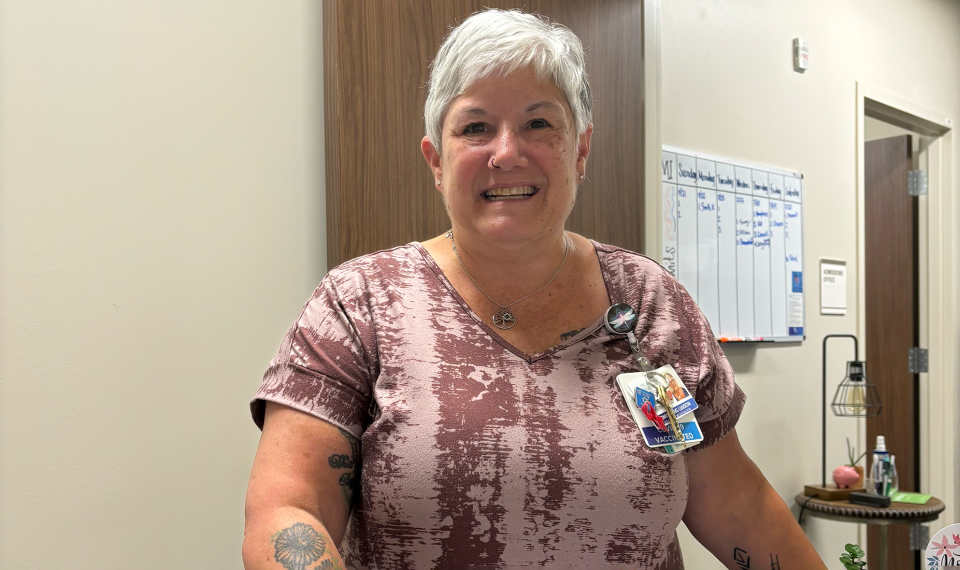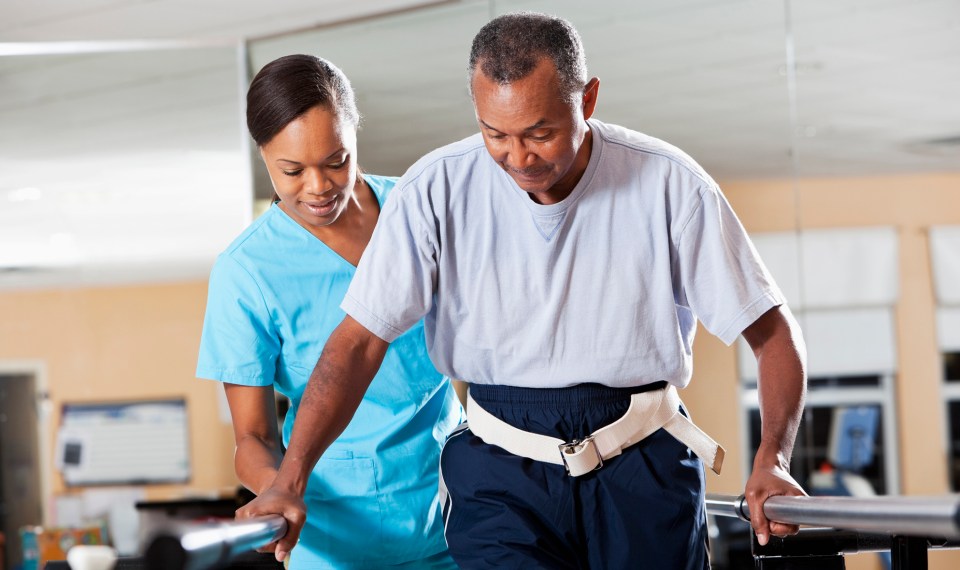After a stroke, you may experience a variety of symptoms. One of the most common is stroke paralysis.
The paralysis occurs on one side of the body and is known as hemiparesis. Depending on the severity of the stroke and where it occurred in your brain, this paralysis can make it difficult to perform everyday activities such as grasping an object or walking.
There are treatment options that can help you recover movement in the affected side.
“Depending on the intensity and duration of the event leading to damage, recovery of stroke will be varied for each individual,” said Vidhya Kannan, a physical therapist and CEO of Encompass Health Rehabilitation Hospital of Northern Virginia. “At a rehabilitation hospital, we’ll try to restore as much function as possible using strategies supported by clinical research.”
Stroke Rehabilitation Near You
If you or a loved one are in need of stroke rehabilitation, find an Encompass Health hospital near you.
Find a LocationWhat Causes Stroke Paralysis?
A stroke occurs when blood flow to the brain is interrupted. It could be caused by a blood clot or an artery bursting, also known as a brain bleed. The interruption of blood flow causes cells in the brain to degenerate. Since the brain controls the function of the body, that degeneration will affect the respective movement and function.
If a stroke occurs on the left side of the brain, you will experience weakness on the right side of your body. If you have a right-sided stroke, weakness or paralysis will occur on the left side of the body.
“All of our functions are triggered by the brain,” Kannan said. “When tissues in the brain are deprived of blood and are stressed, that affects part of your body. I compare it to the electrical panel in your home. If one is off cue, then that particular area in your house won’t have power, so we have to reset the fuse and work on fixing the damage that might have occurred.”
Can Your Recover from Paralysis After a Stroke?
With the right rehabilitation, it is possible to recover some to all movement from stroke paralysis, but results vary based on the individual, how early they engage in recovery treatments and the severity of the stroke.
Kannan said it’s all about restoring the brain and body connection by reconfiguring those pathways or by establishing alternate neuro pathways. This process is known as neuroplasticity.
“You have neuro pathways for any body function to happen,” she said. “This is what connects the body and the brain. When the connection is gone for a motor function or even speech, we try to stimulate disrupted pathways to help with the reconfiguration through evidence-informed practice or to create alternate pathways.”
If function cannot be restored to the affected side, Kannan said your care team can work with you on compensatory strategies to address the one-sided weakness. But, she added, “that is a last resort.”
Treatment and Techniques to Treat One-Sided Paralysis
There are a variety of treatment options and strategies to treat stroke paralysis. Those treatments will depend on the severity of your stroke and the setting you are recovering in. A combination of occupational, speech and physical therapy after stroke is recommended. The more intensive the therapy is early on in the recovery period , the better, Kannan said.
In the inpatient rehabilitation setting, you will receive at least three hours of therapy a day five days a week. You will also have frequent physician visits and 24/7 nursing care.
Some techniques that might be used to help you recover movement in your affected side include:
- Electrical stimulation. Electrical pads will be placed on the weakened side of the body, and a comfortable level of electric current will be used to stimulate the muscles to assist with restoring the neuro-muscular function.
- Mirror therapy. Often used after limb loss, mirror therapy is an intervention that uses a mirror to trick the brain into thinking that both sides of the body are fully functioning.
- Constraint induced movement therapy. This technique constrains movement in the unaffected side of the body to prevent overcompensation and induce movement in the other side. This or a modified version could be used for weeks after your stroke.
- Neurodevelopmental therapy. This is an advanced, hands-on therapy provided by a physical or occupational therapist who specializes in neuro development to stimulate function and movement.
Questions to Consider When Selecting a Stroke Recovery Provider
After your condition is stabilized, your physician might recommend you continue your treatment in another setting of care. Depending on your condition, this could be a skilled nursing facility or an inpatient rehabilitation hospital. Do your research to determine which is best for you.
According to the American Heart Association/American Stroke Association Stroke Guidelines, whenever possible, stroke recovery should take place in the inpatient rehabilitation setting instead of a skilled nursing facility.
CMS requires an inpatient rehabilitation hospital to provide patients with a minimum of three hours of therapy, five days a week. The average length of stay for inpatient rehab patients is about 12 days. A skilled nursing facility will have a longer length of stay—around 28 days—and typically significantly less therapy time.
Kannan said you should also consider the provider’s expertise in treating stroke and stroke paralysis.
“If I were the caregiver or the patient, I would want to know if they have a specialized program for treating stroke,” she said. “About 85% of Encompass Health hospitals are TJC stroke certified. Anything specific to stroke treatment would definitely be an advantage.”
You also want to make sure that you get an individualized treatment plan created to meet your needs and recovery goals. In the inpatient rehabilitation setting, your care team, guided by a rehabilitation physician, will design a plan specific to your lifestyle and needs.
“Our programs are very individualized to the person,” Kannan said. “Identify what your top priority for recovery is, so your care team can build a treatment plan around that.”
The content of this site is for informational purposes only and should not be taken as professional medical advice. Always seek the advice of your physician or other qualified healthcare provider with any questions you may have regarding any medical conditions or treatments.



